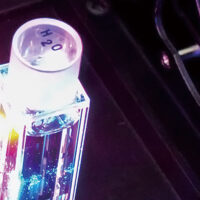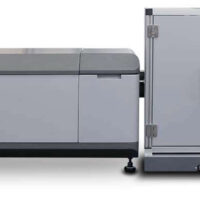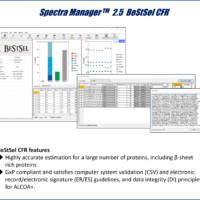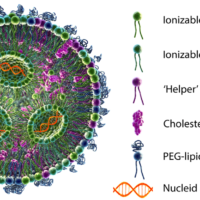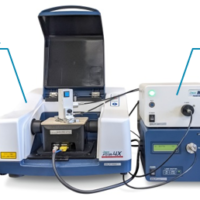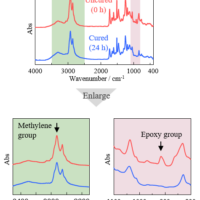Introduction
Generally, fluorescence appears on the long wavelength side, which means that its energy is lower than the one of excitation light (the light absorbed by the sample). On the other hand, in the case of up-converting phosphor, the energy of fluorescence is higher than the one of excitation light because two or more photons involves its reaction, and the fluorescence appears on the short wavelength side.
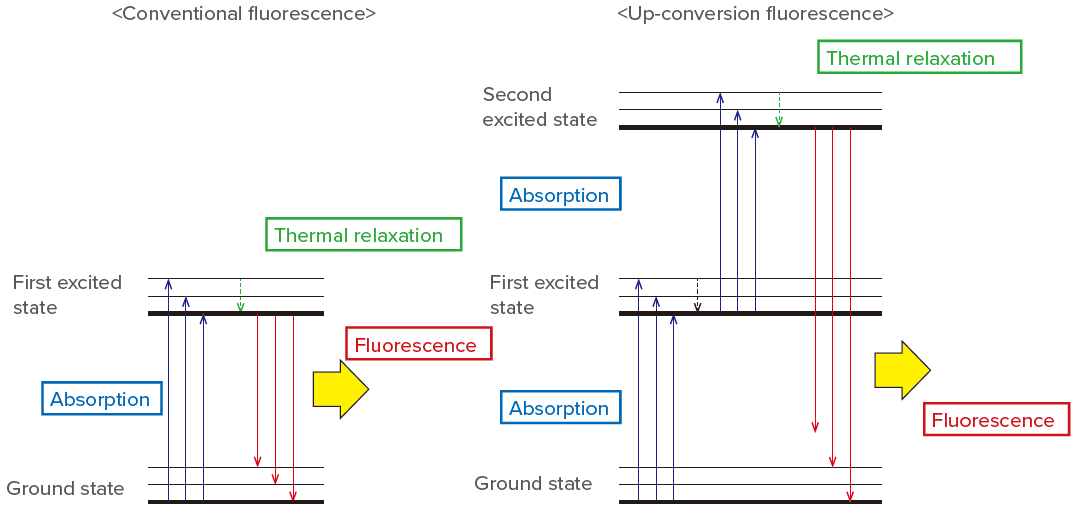
Mechanism of up-conversion fluorescence
This is particularly useful for evaluating labels used for biological imaging, materials in infrared solar cells and development of inks for anti-counterfeiting.
JASCO has developed the up-conversion measurement system, which can detect very small fluorescence by using laser. Figure 1 shows the measurement example of the up-conversion phosphor. Our up-conversion fluorescence measurement system with 980 nm near-IR laser could observe the up-conversion fluorescence.
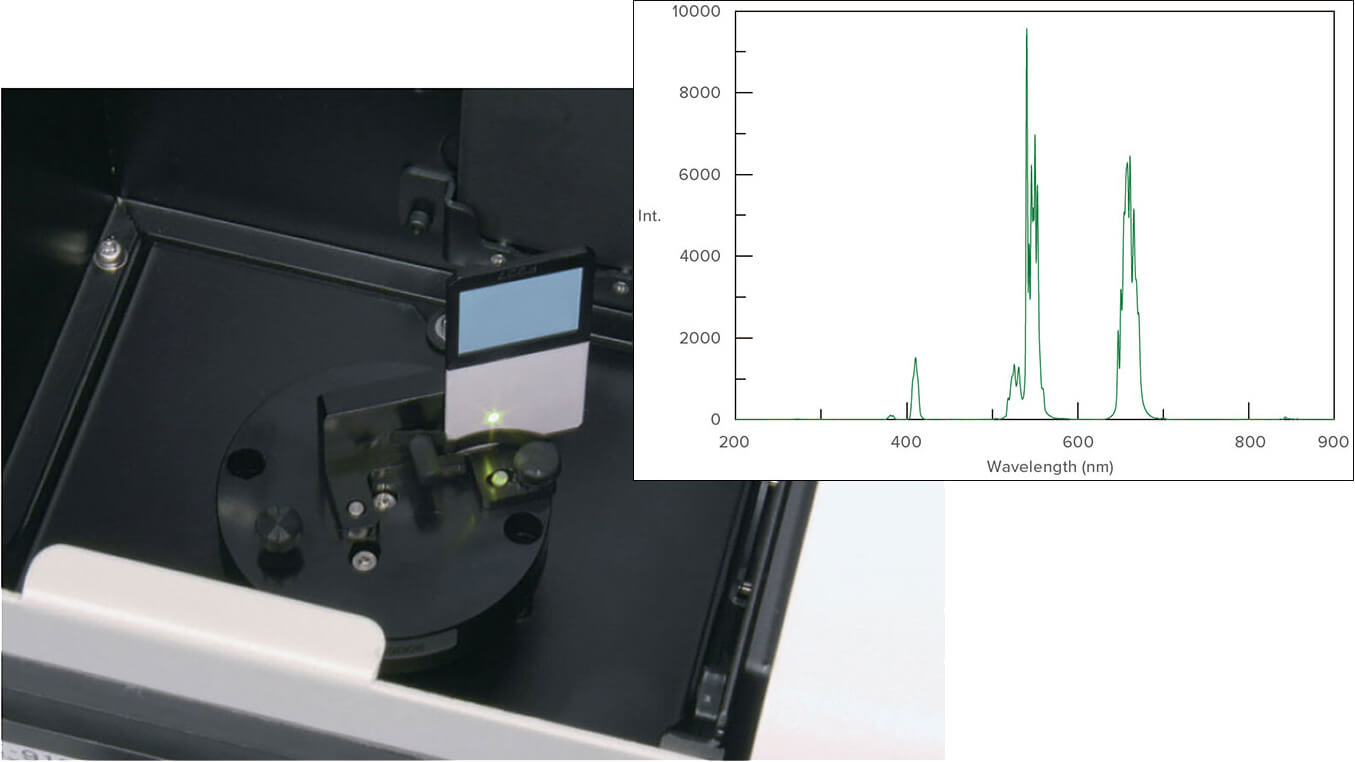
Figure 1. Up-conversion phosphor (The fluorescence at visible light region could be observed when irradiating 980 nm light which the human’s eye cannot observe.)
This dedicated system is expected to be effective tools for studying the excitation process of up-conversion phosphor.

